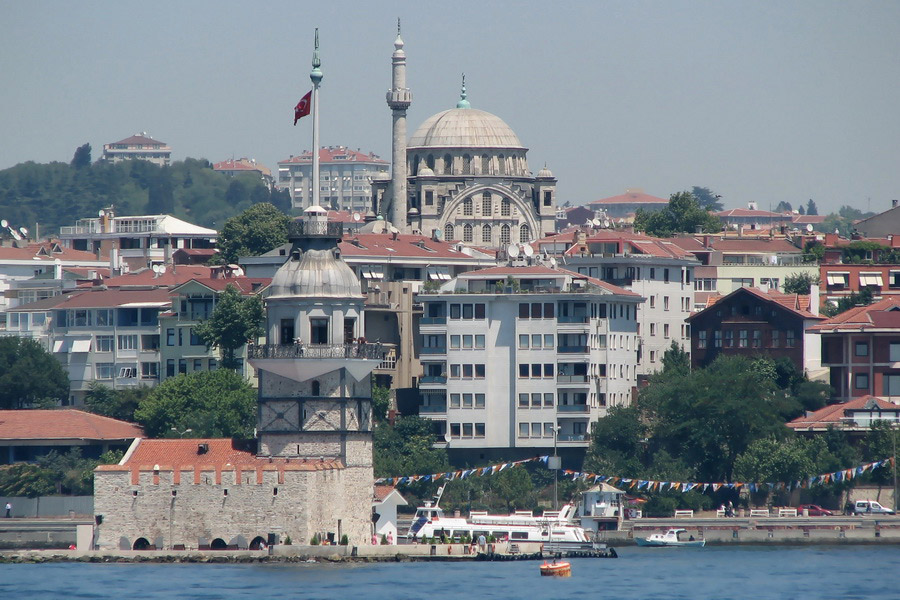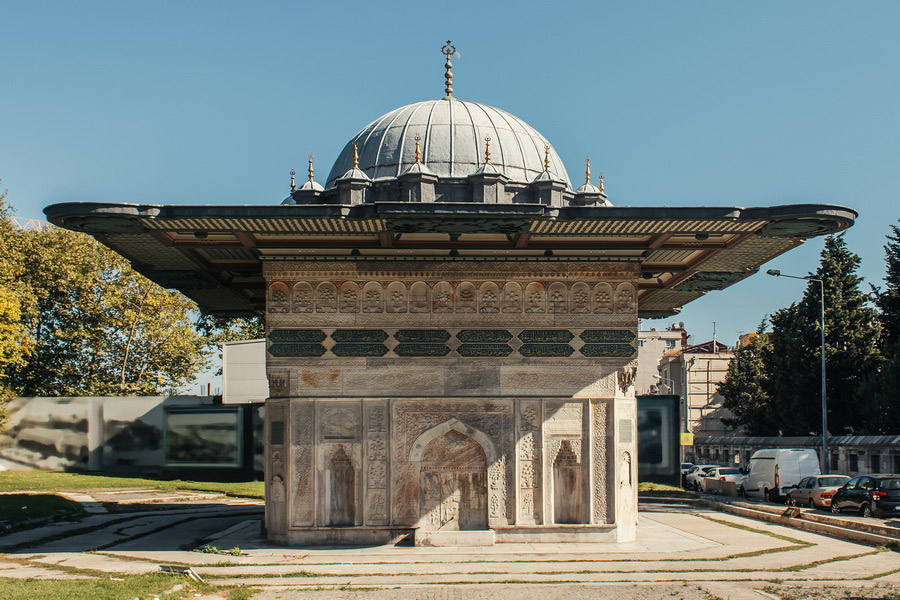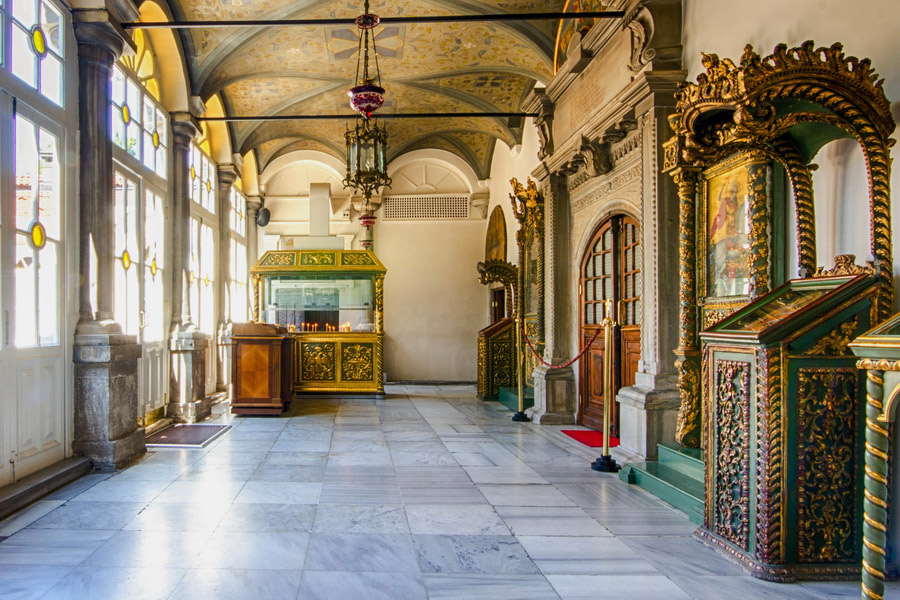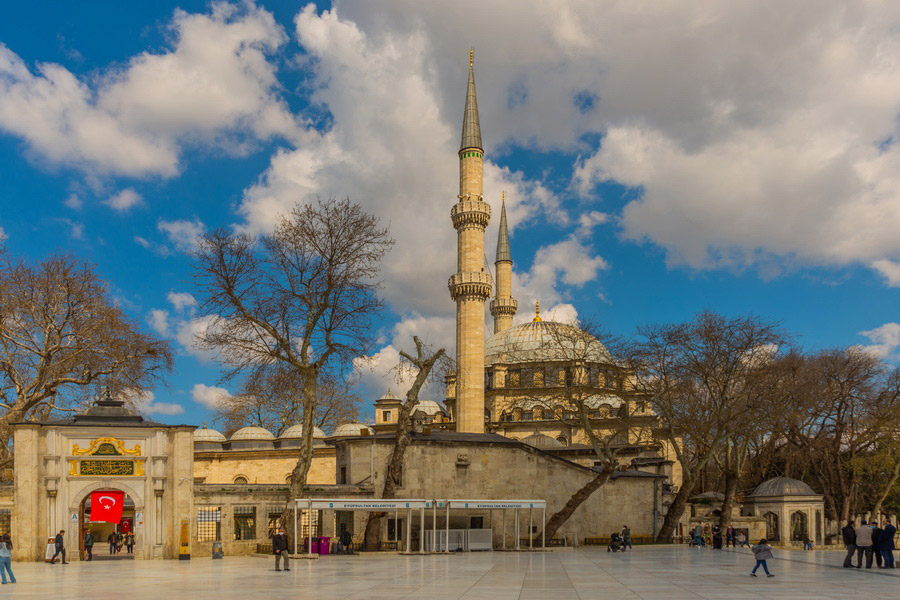Faith Districts in Istanbul

The diversity of Turkey (Türkiye) is manifested on multiple levels of the country, and religion isn’t an exception, standing as one of the determining factors of its multiculturality, while Neighbourhoods of Faith represent a physical verification of that inclusivity, where communities of different faiths have coexisted harmoniously for centuries. These neighbourhoods encompass three major municipalities of Fatih, Balat, and Fener in Istanbul with exceptional cuisine, architecture, local charm, and history, making it a splendid destination for those seeking a serene detour from the hustle and bustle of the streets of Istanbul.
Fatih

The heart of Istanbul’s historic peninsula, Fatih is a district of old Constantinople and home to some of the city's most significant Islamic landmarks. Bordered by the Golden Horn to the north, the Sea of Marmara to the south and the UNESCO World Heritage Site Walls of Constantinople (Konstantinopolis Surları) to the west, Fatih was a political, religious and cultural centre for both the Byzantine and Ottoman Empires. The district takes its name from Sultan Mehmed the Conqueror (Fatih Sultan Mehmed or Meḥemmed-i Sânî), who captured Constantinople in 1453 and transformed it into the Ottoman capital.
Among the district’s must-visit sites is the Fatih Mosque (Fatih Camii ve Külliyesi), commissioned by Sultan Mehmed II on the ruins of the Church of the Holy Apostles (Havariyyun Kilisesi), where many Byzantine emperors were buried. Although the original structure of this mosque was destroyed by an earthquake in 1766, it was rebuilt and still stands as a symbol of Ottoman architectural nobility. On Wednesdays, visitors can also explore Fatih Pazarı, Istanbul’s largest street market, which surrounds the mosque with an assortment of textiles, fresh products and local treats.
Another architectural marvel in Fatih is the Süleymaniye Mosque (Süleymaniye Camii), perched on Istanbul’s Third Hill. Inside, you will encounter elaborate stained-glass windows, elegant calligraphy and a beautifully decorated mihrab. The surrounding courtyards provide breathtaking views of the Bosphorus, making it a perfect spot to comprehend Istanbul’s beauty.
Fatih’s streets are additionally filled with remnants of Byzantine and Ottoman history, such as the Chora Church (Kariye Camii), now a museum and available with Museum Pass Istanbul, showcasing some of the finest Byzantine mosaics and frescoes in the world.
Remnants of the Sea Walls still stand, including the Ayakapı Gate, where the Ayakapı Hamamı attributed to the Ottoman architect Mimar Sinan was built in 1562.
Walking through Fatih, holidaymakers can also admire the mighty Theodosian Walls, which once protected Constantinople from invaders, as well as the Column of Constantine (Çemberlitaş Sütunu), an enduring symbol of the city's Roman heritage.
Fener

Fener, a historic district on the southern shores of the Golden Horn, is a labyrinth of colourful wooden houses, Byzantine churches and cobbled streets. Formerly dwelled Istanbul’s Greek Orthodox community; the neighbourhood still preserves its rich heritage, most notably in the grand Phanar Greek Orthodox College (Fener Rum Erkek Lisesi), a red-bricked fortress of learning towering over the district. Its name comes from the Greek "phanarion", meaning lantern, referring to a Byzantine-era streetlight.
During the Ottoman period, it was home to the Phanariotes (Fenerli Rumlar), influential Greeks who served as translators and administrators. Many of their waterfront mansions, used for storing Black Sea timber, were damaged by road expansions in the 20th century.
Walking through Fener, adventurers will discover the Cathedral of St George (Aya Yorgi Patrikhane Kilisesi), the seat of the Ecumenical Patriarchate, a spiritual landmark of Orthodox Christianity. The Church of St Mary of the Mongols (Kanlı Kilise or Moğolların Azize Meryem Kilisesi), the only Byzantine church in Istanbul never converted into a mosque, continues to operate under a decree issued by Sultan Mehmet II.
Nearby, tucked between narrow alleys, are charming cafés and antique shops, presenting a view of the area’s bohemian transformations. The blend of past and present makes Fener an enchanting stop for those who seek history beyond the well-trodden paths of Istanbul’s tourist bodies.
Despite gentrification creeping in, Fener retains an authentic spirit, where old Greek mansions stand beside humble dwellings.
The T5 tram and Golden Horn ferries connect Fener to other parts of the city, while every January 6, during the Feast of the Epiphany, the Patriarch throws a cross into the Golden Horn, and swimmers dive in to retrieve it.
Balat

The meeting point of time-worn history and artistic reinvention, Balat has seen nations and kingdoms rise and fall. Once it was the heart of Istanbul’s Jewish community. Then the great earthquake in 1894 led many to leave, but the past does not vanish so easily. It lingers in the narrow streets, in the cracked facades, in forgotten doorways and colourful houses, and in antique shops and historic synagogues.
Also famed for its mismatched wooden homes, their peeling paint and crooked balconies lending an almost dreamlike disorder, Balat represents an exquisite end for faith tourism in Turkey.
In the cafes and boutiques here, craftsmen and vintage collectors flourish. Agora Meyhanesi, a legendary tavern, has been filling glasses since the early 1900s, while Forno, a bakery and pizzeria, keeps feeding travellers and locals alike with freshly baked pide (a kind of Turkish pizza).
The Ahrida Synagogue (Ahrida Sinagogu) was built around 1430 by Romaniote Jews from Ohrid. When Sephardic Jews arrived in 1492, their numbers grew, their customs took root, and the Romaniotes faded into their ways. The Bulgarian St Stephen Church (Sveti Stefan Kilisesi), with its cast-iron walls, remains an architectural oddity unlike any other in Istanbul.
Balat resists the rush of modernity, yet it doesn’t reject it. In its streets, art coexists with Byzantine ruins, and third-wave coffee shops are nestled beside century-old bakeries. Here, nostalgia is not a commodity but a living thing, draped over the cobblestone streets like an old, beloved shawl.
Eyüpsultan

Eyüp, one of Istanbul’s most esteemed districts, commands religious significance as the burial place of Abu Ayyub al-Ansari (Ebu Eyyûb el-Ensarî), a companion of the Prophet Muhammad (Muhammed). Located at the northern end of the Golden Horn, it has been a major pilgrimage site since Ottoman times. The Eyüp Sultan Mosque (Eyüp Sultan Camii), built in 1458, stands beside his tomb, attracting visitors for prayers, blessings and ceremonies like circumcisions and weddings. The mosque’s courtyard vibrates with devotees buying prayer beads, Islamic books and dates, especially during Ramadan when tents serve free evening meals.
The area was once Byzantine, known as Kosmidion, before becoming a key Ottoman settlement. Sultan Mehmed II established the mosque and tomb after his spiritual advisor located Abu Ayyub’s grave, turning Eyüp into a sacred burial ground. Many Ottoman elites, including scholars and statesmen, were laid to rest here, their ornate tombstones showcasing unique calligraphy. The tradition of sultans being surrounded by swords here before their reigns further enhanced its prestige.
The Pierre Loti Café, named after a French writer who frequented it, sits on a hill overlooking the Golden Horn – a perfect spot for tea with a view. A gondola lift connects the café to the waterfront, passing over historic cemeteries. Nearby, the Feshane, a former fez factory, now hosts cultural exhibitions.
Eyüp balances spirituality with everyday life in Istanbul, where conservative Muslim families coexist with pilgrims and tourists. The streets behind the mosque bustle with markets, cafes and Ottoman-era architecture. If you’re seeking faith tourism in Turkey, Eyüp is a must-visit destination.

